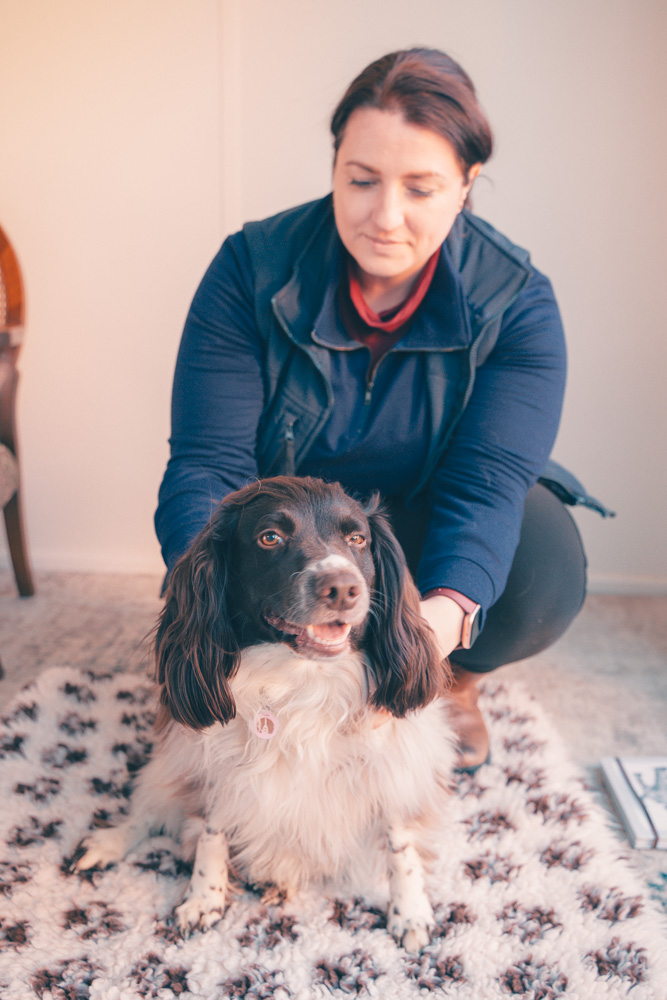
What is McTimoney with Jay Hrycak from Cedarlily Therapy
When you’re in pain… Do you head to a chiropractor or book a sports massage?
I do, and I always feel so much better for it. So it stands to reason that our dogs would benefit from similar treatments, I would argue that it is potentially more important for them considering they can’t communicate when they are feeling sore or uncomfortable and many of us wouldn’t know how to tell.
That’s where I can help!
I am a qualified McTimoney animal chiropractor and musculoskeletal specialist and I am often asked what animal chiropractic actually is and how it works, so let me tell you…
What is McTimoney?
McTimoney chiropractic was developed in the 1950s by John McTimoney who later adapted his techniques to work on animals. It is a gentle method that requires only the practitioner’s hands and works with fast yet low impact adjustments. The ethos is to be a holistic therapy, working with the animal’s body to optimise its function and allow its innate and incredible healing ability to work as well as it can.
As a practitioner I use manual palpation (touch and feel) to find areas of restriction within the spine and aim to help ease these restrictions and allow everything to comfortably sit in its neutral position.
How does it work?
McTimoney works with the animal’s nervous system which consists of the brain and spinal cord, housed in the skull, throughout the spine (made up of a series of vertebrae) and then into the pelvis. Any areas of restriction we find could be a point where the spinal cord (or the many peripheral nerves that branch out from the spinal cord between each pair of vertebrae) are being impinged and therefore dysfunctional, ultimately affecting the communication between the animal’s brain and body!
When I find these areas, I use adjustments to add energy into the muscles that sit between the vertebrae (the multifidus muscles) and any associated muscles in the area, to encourage them to contract. This contraction leads to the opposing muscles contracting as well, which then encourages both to relax.
In turn this releases the tension the muscles are putting onto the vertebrae, skull, or pelvis, and allows them to sit back in their neutral position. This allows the nerves to function optimally and the body can heal any damage in that area.
I integrate this treatment with animal massage techniques (working on the associated soft tissues that I find to be tight or restricted).
So what causes tightness and restrictions in our dogs?
There are many reasons and often it can be a combination of events.
- An accident that causes impact to an area (slipping on the floor, running into the sofa)
- Illness / disease (cruciate damage or dysplasia / arthritis in joints).
- Repetitive actions e.g., pulling on the lead, running for balls or sports such as agility / flyball
- Intense activity such as that seen in working gundogs or sports dogs can also cause chronic tension
It can be beneficial for all dogs to receive treatments as just dogs being dogs in every day life can lead to tension building (just like us), regular treatment can prevent this.
If your dog has experienced an illness or trauma there be an inevitable increase in tension in the spinal muscles due to over compensation in other areas.
Perhaps you’ve noticed they start moving differently to normal, appear stiff or are just out of character.
Treatment sessions are delivered at each individual dog’s pace, ensuring they are comfortable and relaxed and are consenting to treatment – they are free to move away at any time. It can be an odd but satisfying sensation so dogs are free to take as many breaks as they need to ensure they find the experience positive.
I work throughout Buckinghamshire and hold a fortnightly clinic at the Potter Paws Training. To discover how an integrated musculoskeletal treatment can help your dog, email [email protected]